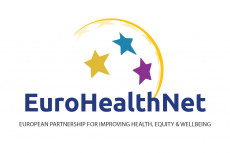Gender-sensitive Workplace Health Promotion: Why It Is Important and How It Can Be Implemented in Practice

Sex and gender are powerful determinants of health that also influence employment and occupational health. Different genders might be unevenly represented in some positions within an organisation and experience different challenges to health and wellbeing at work. In order to enable all people to benefit from workplace health promotion (WHP), the gender perspective needs to be central to each phase: planning, execution, and evaluation. Unfortunately, criteria for effective gender-sensitive health promotion in the workplace are largely lacking. Aiming to build on good practices and to identify criteria for effective gender-sensitive WHP, the Austrian Health Promotion Fund (FGÖ), a business unit of the Austrian National Public Health Institute, has collected knowledge on gender-sensitive WHP by analysing literature and good practices, the results of which were published last January.
Why should workplace health promotion be gender sensitive?
The main argument for sex and gender-sensitive WHP is that health promotion activities which are attuned to their target audience are more effective than broad but scattershot approaches. Sex and gender-related WHP is also important to fulfil legal, moral or ethical obligations to provide a work environment that promotes good health for both men and women, as well as LGBTQ+ people. Moreover, there are economic arguments to be made for gender-sensitive WHP as well, as effective, tailor-made measures have the potential to prevent health issues, maximise productivity, minimise sick leave, decrease shortages of skilled workers, and increase the organisation’s competitiveness as an employer. This is particularly important in this period of demographic and labour market change. Equal health opportunities for all genders is also often mentioned as in a goal in equality policies, such as the UN Sustainable Development Goals, that should be reflected in workplace settings as well.
Developing effective gender-sensitive WHP
The research team has conducted a literature review of evidence on gender-sensitive WHP. The choice of which literature to review was based on recommendations by health promotion experts. In order to include real-life examples as well, documentation of five gender-related WHP projects was included. The review led to the identification of criteria, which was carried out according to pre-defined inclusion and exclusion standards. Based on these steps, 17 gender-relevant overarching criteria and 62 checklist questions were defined. When starting a new WHP project, these criteria and questions should be central to every phase of the process.
For one, the gender balance within the organisation should always be acknowledged. In case of an uneven balance, reasons should be considered and solutions for making the positions more attractive and available for all genders should be sought. Such a gender balance analysis should go beyond simply considering the balance in the entire organisation to evaluating gender unbalances in different positions and at different levels as well. To maximise participation of all genders, different motives for participation in WHP activities need to be considered and addressed.
Read more here.







